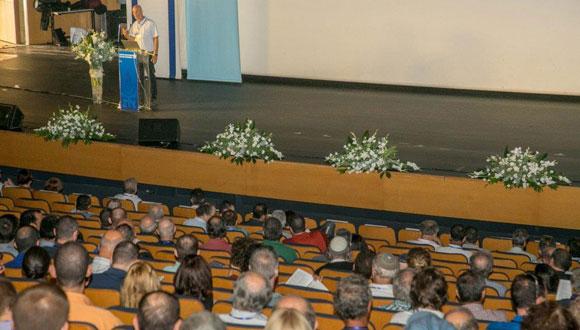קולוקוויום בפיזיקה: What does light look like? Perspectives from the point of view of a relativistic electron wavepacket
Ido Kaminer
Zoom: https://us02web.zoom.us/j/82789246958
Abstract:
Over the past few years, coherent free electrons have become a platform for testing new ideas in light-matter interactions.
The quantized exchange of photons between free electrons and laser pulses has inspired novel theoretical concepts such as electron-light entanglement, free-electron qubits, and quantum-classical correspondence in electron accelerators. These concepts motivate recent experiments targeted at fundamental questions in quantum mechanics, and lead to the development of novel techniques for nearfield optical microscopy.
We perform such free-electron experiments in a custom-made laser-driven (ultrafast) transmission electron microscope. I will present our recent results, showing some of the most advanced nearfield optical microscopy in the world today. We resolve photonic bandstructures as a function of energy, momentum, and polarization, simultaneously with capturing the temporal dynamics and spatial distribution of the photonic modes at deep-subwavelength resolution.
We demonstrated these capabilities using light trapped in photonic crystals, observing the first coherent interaction of free electrons with photonic cavities. Moreover, we developed the theory of coherent free-electron interactions with phonon-polaritons in 2D materials. Using this theory, we observed the exotic dynamics of hyperbolic polariton wavepackets in 2D materials, identifying the acceleration, deceleration, and splitting and multi-branch wavepackets.
I will discuss the prospects of free-electron light-matter interactions and speculate on future goals that we expect to see happening in the next few years.
[1] N. Rivera and I. Kaminer, Light–matter interactions with photonic quasiparticles, Nature Reviews Physics 2, 538–561 (2020)
[2] R. Dahan†, S. Nehemia†, M. Shentcis, O. Reinhardt, Y. Adiv, X. Shi, O. Be’er, M. H. Lynch, Y. Kurman, K. Wang and I. Kaminer, Resonant phase-matching between a light wave and a free-electron wavefunction, Nature Physics 16, 1123-1131 (2020)
[3] K. Wang, R. Dahan, M. Shentcis, Y. Kauffmann, A. Ben-Hayun, O. Reinhardt, S. Tsesses, I. Kaminer, Coherent Interaction between Free Electrons and Cavity Photons, Nature 582, 50 (2020)
[4] M. Shentcis, et al., Tunable free-electron X-ray radiation from van der Waals materials, Nature Photonics 14, 686–692 (2020)
[5] O. Reinhardt†, C. Mechel†, M. H. Lynch, I. Kaminer, Free-Electron Qubits, Annalen der Physik 533, 2000254 (2021).
[6] A. Karnieli, N. Rivera, A. Arie, I. Kaminer, Light emission is fundamentally tied to the quantum coherence of the emitting particle, arXiv:2011.00623 (2020).
מארגן האירוע: ד"ר מיכאל גלר


